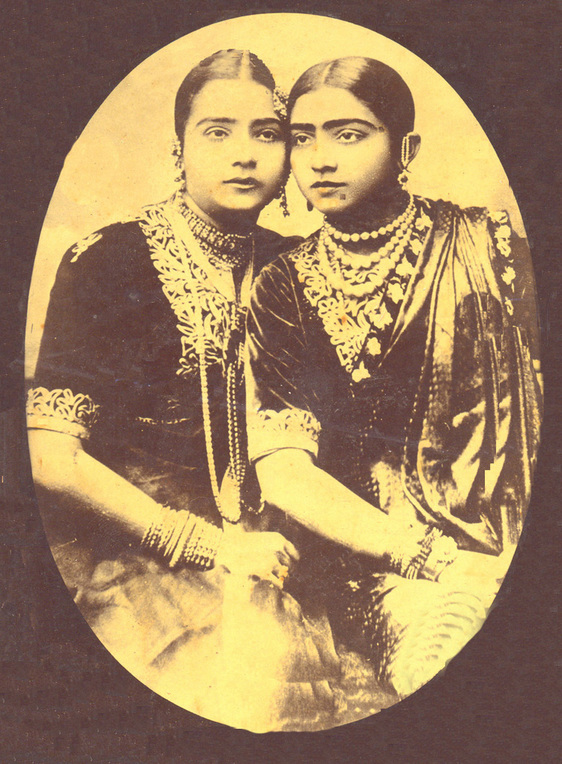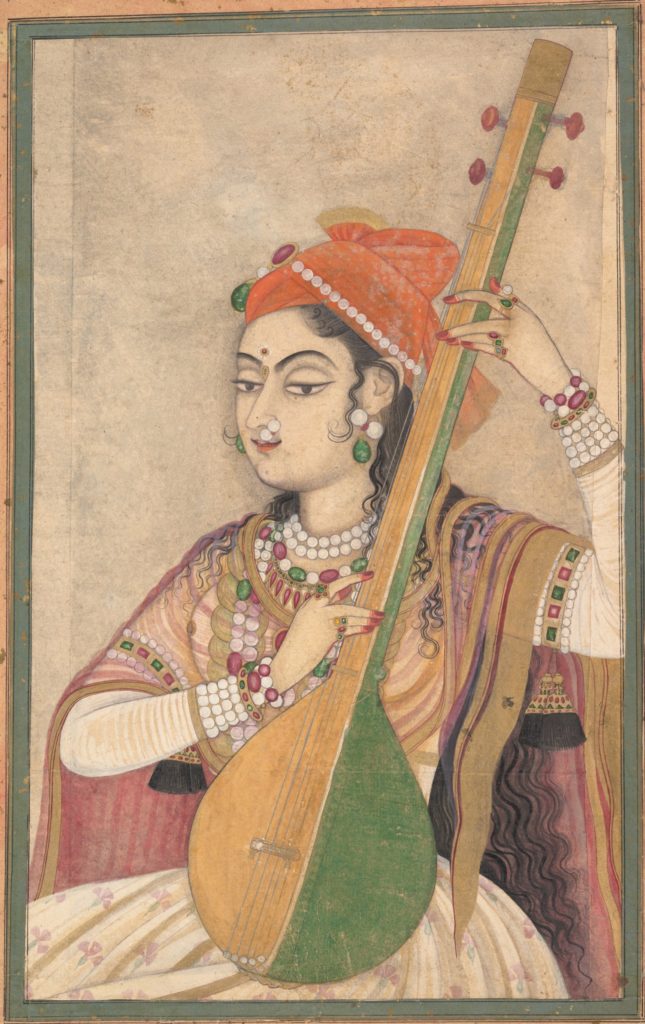By Hiral Goyal

India’s cultural past has been abundant, so vast and deep-rooted that quite often certain traditions and histories of these cultures lose their path with the processes of time and by the time they reach us in the present, they have undergone so many alterations that they are no longer what they set out to be. One such cultural history is that of Tawaifs in India whose origins can be traced back to the Mughal Empire. Tawaifs were highly sophisticated dancers and singers who graced the Mughal courts with their performances. Often misunderstood to be the modern-day courtesan (prostitute), they were originally known as courtiers who performed for the Mughal courts. Unlike today, in the yesteryears, Tawaifs were considered to be the epitome of tehzeeb and children of aristocratic families were sent especially to them to acquire manners and etiquettes. They were one of the wealthiest classes of society with properties and assets to their name.
With the revolt of 1857, however, their reputation declined. They had helped in the revolution by providing wealth as well as “spaces” in their kothas for the mutiny to brew. When the British realized the role that the tawaifs had played in the freedom struggle, their properties were confiscated, their wealth looted, and their status morally degraded to the level of prostitutes. The missionaries that were starting to come up in India condemned those who were once considered to be pioneers of various art forms and labelled them as equivalent to prostitutes. The Indians too, did not hesitate to forget the contributions that the tawaifs had made in the growth of Hindustani music and dance, and started believing in everything that the British said. The dominant culture becomes the national narrative and it did. The tawaifs no longer had the same reputation in society. The ones who had held a central position, quite literally in cities and villages were now being marginalized and side-lined. Before their decline, tawaifs were treated in a manner that was similar to the upper caste people. However, after 1857, their community suffered a backlash not only from the foreign invaders but also from Indians, who had started viewing them through the British lens.

In the 1890s, the social reformers in India began a social purity movement that uprooted the Tawaifs from their status and planted them as immoral and disgraceful beings. The British had by then, passed the Cantonment Act of 1864 which regulated prostitution and limited it just to the British military bases. According to this act, the “prostitutes” were allowed to offer their services to the British soldiers. Over the years of the British rule in India, this act was revised a few times to safeguard the interests and health of the soldiers while endangering and threatening the lives of women who came under this law. Although the Indian culture of devadasis and tawaifs which celebrated and respected them clashed with that of the British laws, this act initiated the inclusion of tawaifs, nautch girls, and devadasis under the same category as ‘prostitutes’ in the Indian Penal Code.
The post-colonial hangover restricted the tawaifs to escape the limitations that had been imposed upon them by the colonizers. The law, as well as the mentality of the Indians, denied them the space to restore their once glorious heritage as the connoisseurs of Indian dance, music, and poetry. They were no longer allowed to practice their art, as it was deemed unlawful and a means to entice “customers”. Their culture was now hidden under the garb of commodification which they could not uncover. Yet, the tawaifs found ways to assert their artistic autonomy if not their liberty and freedom. Through thumri, a dance form practised by tawaifs and the nautch girls, they discovered means to reclaim their artistic integrity, while at the same time, overtly conforming to the Indian society’s derogatory definition of themselves. The lyrics of the songs used while performing thumri relished the patriarchal conventions and the status of women as sexual commodities in the society, but the form of the performance was a deviation from classical music. It was in the manner of their ragas colliding with one another, and the liberty with which the notes were sung rejoiced artists. This helped to establish their long-lost positions. Despite the fact that these women were actually one of the major contributors to the various forms of art in India including Hindustani music, they were denied rights in postcolonial India.

The one field that was open to them was the film industry during the early stages of its conception. This was at the time when performing dance, music, and acting in the public/for the public domain was considered lowly by the middle and upper classes of India. The lack of availability of choices led the door open for these women who were talented but were not appreciated enough. Alam Ara (1931) was one of the first films that cast a former courtesan Zubeidaas, an actress, who was brought into the film industry by her mother, Fatima Begum. These courtesans had hardly anything left to lose to the moralistic conventions of the society. Kajjan Bai, who belonged to the Calcutta Club, acted in the movie Shireen Farhad (1931) and Laila Majnu, for which she also sang most of the songs. Saira Banu, the daughter of Naseem Banu, was known as one of the most beautiful actresses of her time. These were, however, minor steps they could take to find solace in the performing arts when every other possibility of restoring their lost glory was denied to them. The authority with which the British defined the position of these tawaifs soon translated into that of the colonised. They continued to keep up with the laws that were laid down by the British, viewing the culture of tawaifs as something foreign and forbidden. Soon, the tawaifs and their culture declined in India. There is a great probability that the future generations of those who were able to move out of their low station in life by getting into the film industry are doing quite well today. However, it is important to acknowledge that the once regarded community that fostered tehzeeb and tameez, a reminder of Muslin and Hindustani music’s nostalgia did not deserve to lose its existence in this manner. We should not disregard the fact that the matter of interest here is that they were not only victims to the British’s ethnocentrism, but equal victims of the fellow Indians.


Wow, this was very interesting to read. Have you ever considered submitting articles to magazines?
Wow, great article.Much thanks again. Want more.